“Joy in the Book of Mormon,” Ensign, Sept. 2005, 51–53
Joy in the Book of Mormon
Minerva K. Teichert found joy in the scriptures and felt that her Book of Mormon paintings and murals were her most important works.
Minerva K. Teichert’s life was filled with contrasts. Minerva (1888–1976) and her husband, Herman, raised five children on their Wyoming ranch, where she lived the rugged life of one who cared for horses and cattle. At the same time, she was also a sensitive artist and faithful student of the scriptures whose love for the Book of Mormon stories and the pioneers flowed onto large canvases attached to the four walls of her living room.
She studied art in Chicago (1909–12) and in New York (1915–16). Of her training in New York with Robert Henri, one of the most influential American art teachers of the early 20th century, she said, “I’ve driven many a run-away team, and I love the pull of the reins in my hands, but [Henri’s] class was something now!”1
At one point Henri asked her if anyone had told “the Mormon story.” Minerva replied, “Not to my liking.” As a result the story of the Latter-day Saint pioneers and stories from the scriptures became the subject matter of her art. Her prolific career spanned six decades and resulted in nearly a hundred murals as well as hundreds of paintings.
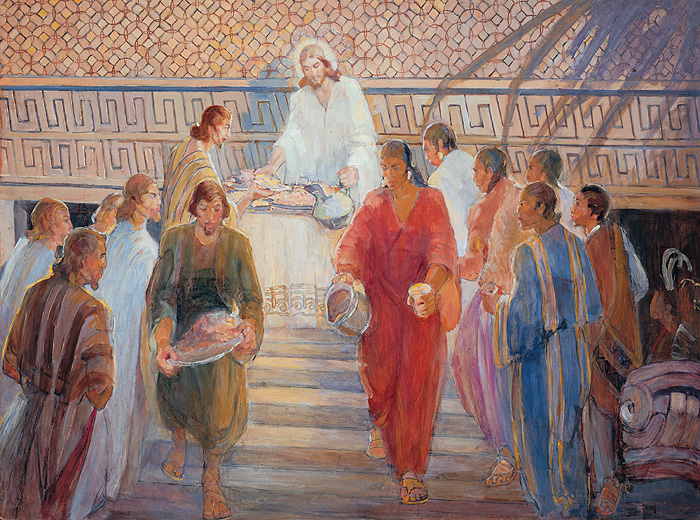
The Sacrament. “And when the disciples had come with bread and wine, [Jesus] took of the bread and brake and blessed it; and he gave unto the disciples and commanded that they should eat. And when they had eaten and were filled, he commanded that they should give unto the multitude” (3 Ne. 18:3–4).

Alma Baptizing at the Waters of Mormon. Alma said, “Now, as ye are desirous to come into the fold of God, and to be called his people, and are willing to bear one another’s burdens, that they may be light … what have you against being baptized in the name of the Lord? … [And Alma] did baptize every one … and they were in number about two hundred and four souls; yea, and they were … filled with the grace of God” (Mosiah 18:8, 10, 16).
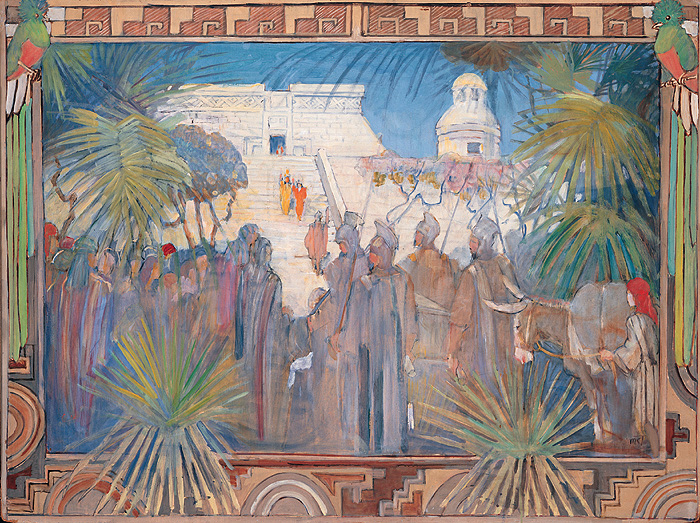
Mosiah Discovers the People of Zarahemla. “Now, there was great rejoicing among the people of Zarahemla … because the Lord had sent the people of Mosiah with the plates of brass which contained the record of the Jews. … Mosiah caused that they should be taught in his language … [and] the people of Zarahemla, and of Mosiah, did unite together” (Omni 1:14, 18–19).
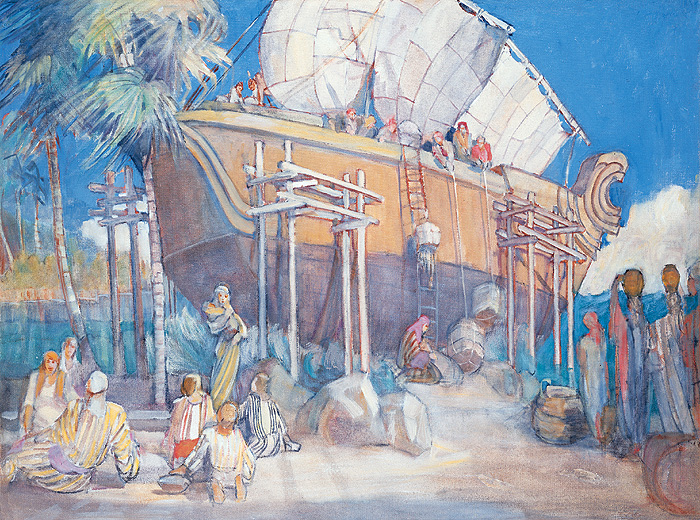
Lehi’s Family Loads the Ship. Of preparations to sail to the promised land, Nephi wrote: “After we had prepared all things, much fruits and meat from the wilderness, and honey in abundance, and provisions according to that which the Lord had commanded us, we did go down into the ship, with all our loading and our seeds, … every one according to his age” (1 Ne. 18:6).
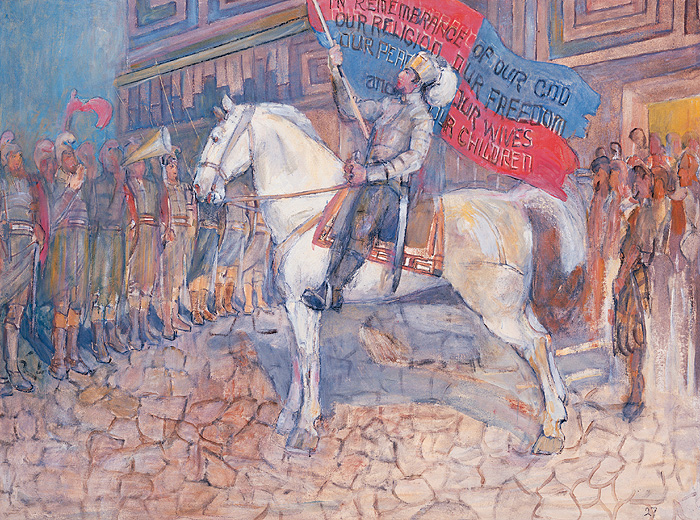
The Title of Liberty. Moroni, commander of the Nephite armies, “rent his coat; and he took a piece thereof, and wrote upon it—In memory of our God, our religion, and freedom, and our peace, our wives, and our children—and he fastened it upon the end of a pole. … And he did raise the standard of liberty in whatsoever place he did enter, and gained whatsoever force he could in all his march towards the land of Gideon” (Alma 46:12; Alma 62:4).
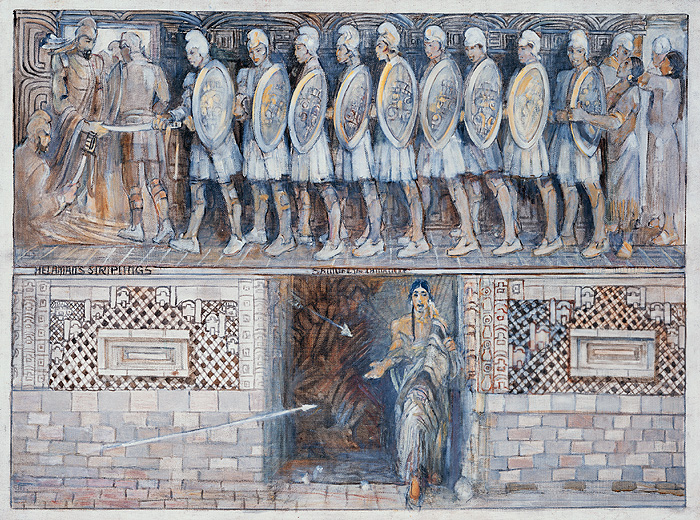
Helaman’s Striplings and Samuel the Lamanite. The upper half of this two-part painting shows the 2,000 Lamanite warriors of Helaman (see Alma 53:16–22); the lower half shows Samuel the Lamanite preaching amid arrows shot at him by the Nephites (see Hel. 16:1–8).

The Angel. As Alma the younger and the four sons of Mosiah went about to destroy the church of God, “the angel of the Lord appeared unto them; and he descended as it were in a cloud; and he spake as it were with a voice of thunder, which caused the earth to shake upon which they stood” (Mosiah 27:11).
All images © BYU Museum of Art, may not be copied